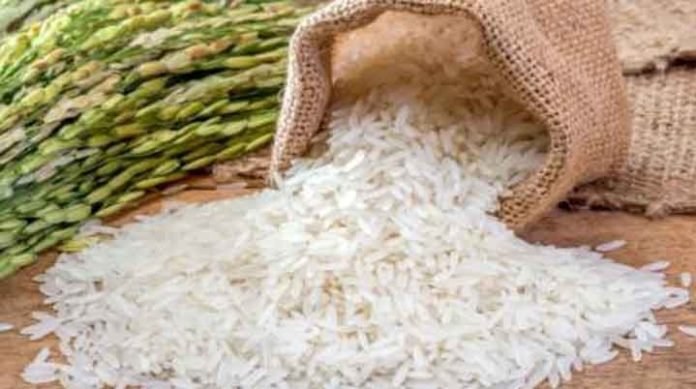Japan, a country known for its deep-rooted connection to rice, is facing an unprecedented shortage of this staple food. Supermarkets and local markets across the nation are witnessing empty shelves as rice supplies dwindle, leading to growing concern among both consumers and authorities. For the first time in recent memory, Japan is grappling with a significant rice shortage, a situation that has taken the country by surprise.
Panic Buying Fueled by Natural Disaster Warnings
The sudden rice shortage can be traced back to the Japanese government’s warnings about potential earthquakes and storms. With the country entering its notorious typhoon season, which spans from May to November, residents have reacted by purchasing and stockpiling rice in large quantities. The months of August and September are particularly perilous, with 19 to 21 storms forecasted this year. This led to a wave of panic buying, as people feared potential disruptions to their food supply.
As a result, many supermarkets have run out of rice, with those still carrying stock urging customers to limit their purchases. The fear of being unprepared for the looming natural disasters has driven this buying frenzy, causing a rapid depletion of rice stocks across the country.
Typhoon Season: A Period of Heightened Risk
Typhoon season in Japan is a time of heightened vigilance, with the potential for heavy rains, landslides, and floods. The government’s warnings have been based on the historical impact of these storms, which often lead to significant damage to infrastructure and agriculture. Given that rice is a critical part of the Japanese diet, any threat to its availability is taken very seriously by the public.
The impact of natural disasters on rice production cannot be understated. The anticipation of disrupted supply chains, coupled with the fear of crop damage, has contributed to the current shortage. Historically, Japan has managed to maintain a stable rice supply, even in the face of natural disasters, but this year has proven to be a challenge unlike any other.
Agriculture Minister’s Reassurance Amid the Crisis
In response to the growing concerns, Japan’s Agriculture Minister, Tetsu Sakamoto, has stepped forward to reassure the public. He acknowledged the shortage of rice stocks in certain areas but emphasized that the situation is under control. According to Minister Sakamoto, there is currently enough rice in stock to meet the country’s needs until the new harvest begins in September.
The annual rice crop, which is harvested in September, is expected to alleviate the shortage. The arrival of new rice in the market should stabilize supply and ease the current panic. However, until then, the government is urging citizens to remain calm and refrain from excessive stockpiling.
The Role of Obon Festival and Foreign Tourism in Rice Demand Surge
The timing of the rice shortage has been exacerbated by two additional factors: the ongoing Obon Festival and a surge in foreign tourism. The Obon Festival, which started on August 13, is a time when Japanese families come together to honor their ancestors. This period of long holidays has significantly increased the demand for rice, as families prepare traditional meals to mark the occasion.
Moreover, Japan has seen a record number of foreign tourists this year, further straining the rice supply. According to the Japan National Tourism Organization, over 3.1 million foreign tourists visited Japan by June 2024, a substantial increase that has added pressure to the already limited rice stocks. The convergence of these factors has created a perfect storm, leading to the current shortage crisis.
The Disparity Between Rice Production and Consumption
A closer look at Japan’s rice production and consumption figures reveals an underlying issue that has contributed to the shortage. According to the Foreign Agriculture Service report from the U.S. Department of Agriculture, Japan’s total rice production for the 2023-24 season was estimated at 7.3 million tonnes. However, domestic rice consumption was higher, at 8.1 million tonnes.
This disparity between production and consumption has left Japan with a shortfall, which has been further magnified by the current crisis. The gap between supply and demand has not only strained existing stocks but has also heightened the sense of urgency among consumers.
Government Measures and Potential Solutions
In light of the rice shortage, the Japanese government is exploring various measures to stabilize the market. One potential solution is to increase imports from other rice-producing countries to fill the gap until the new harvest is available. While Japan traditionally relies on domestically produced rice, the current situation may necessitate a temporary increase in rice imports to ensure food security.
The government is also considering implementing rationing measures if the shortage persists. By limiting the amount of rice that each household can purchase, authorities hope to prevent further depletion of stocks and ensure that everyone has access to this essential food item.
Long-Term Implications and Future Outlook
The rice shortage in Japan has underscored the vulnerability of the nation’s food supply to both natural disasters and sudden surges in demand. It has also highlighted the need for more robust contingency planning to manage such crises in the future. As Japan continues to face the challenges posed by its unique geographic and climatic conditions, ensuring a stable supply of staple foods like rice will remain a top priority.
Looking ahead, the situation is expected to improve once the new rice crop is harvested and enters the market in September. However, the current shortage serves as a reminder of the delicate balance between production and consumption in Japan’s food supply chain. It also raises questions about the country’s ability to manage similar crises in the future, particularly as climate change continues to influence weather patterns and agricultural production.
Navigating the Rice Shortage Crisis
As Japan navigates this unprecedented rice shortage, the nation’s resilience is being tested. The combination of natural disaster fears, increased demand due to cultural events, and a surge in foreign tourism has created a perfect storm, leading to empty shelves in supermarkets and local markets. While the situation is expected to stabilize with the arrival of the new harvest, the current crisis highlights the importance of strategic planning and preparedness in maintaining a stable food supply.
The government’s efforts to reassure the public and explore potential solutions are critical steps in addressing the shortage. As Japan moves forward, lessons learned from this experience will be invaluable in shaping future policies to prevent similar crises and ensure the continued availability of rice, a cornerstone of the Japanese diet.
















